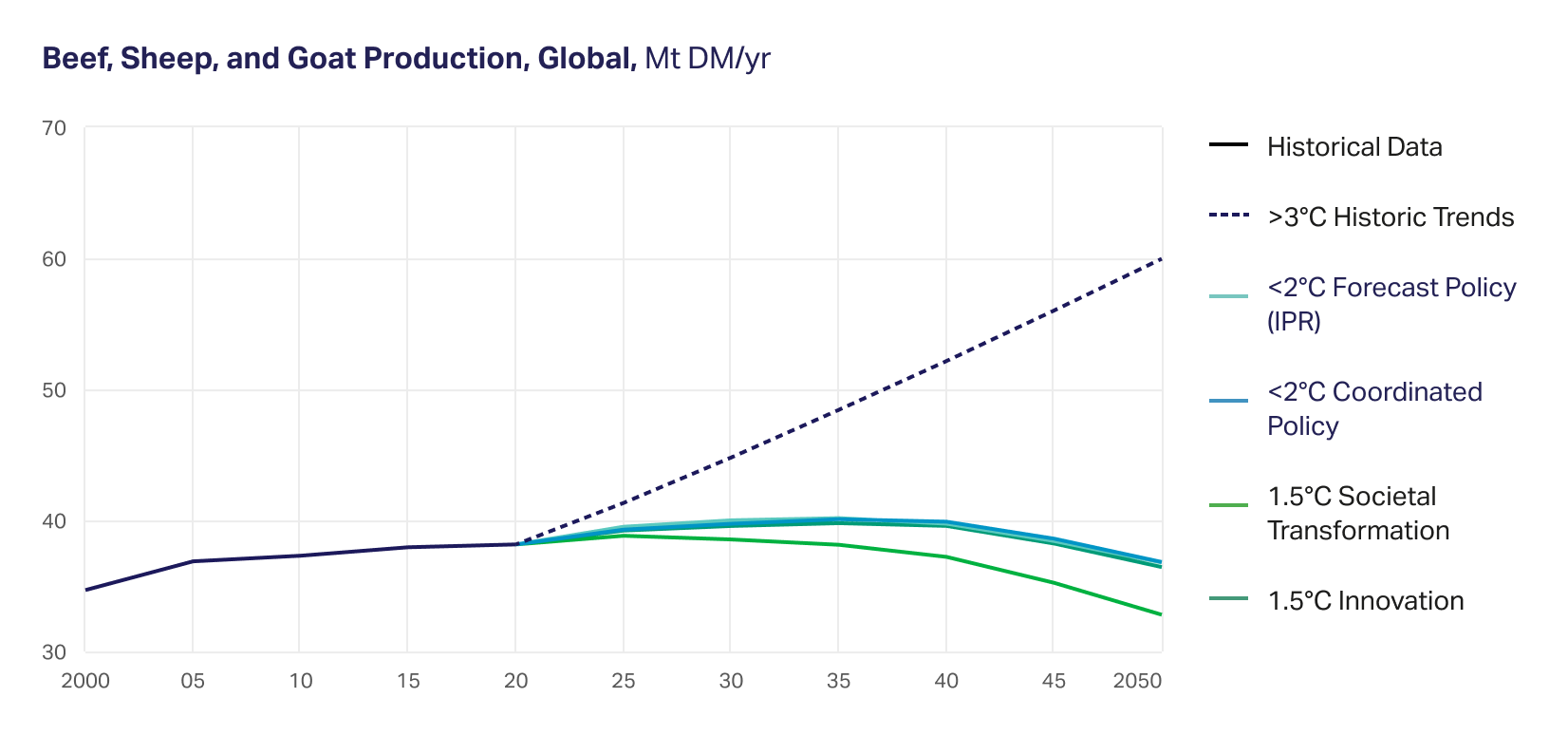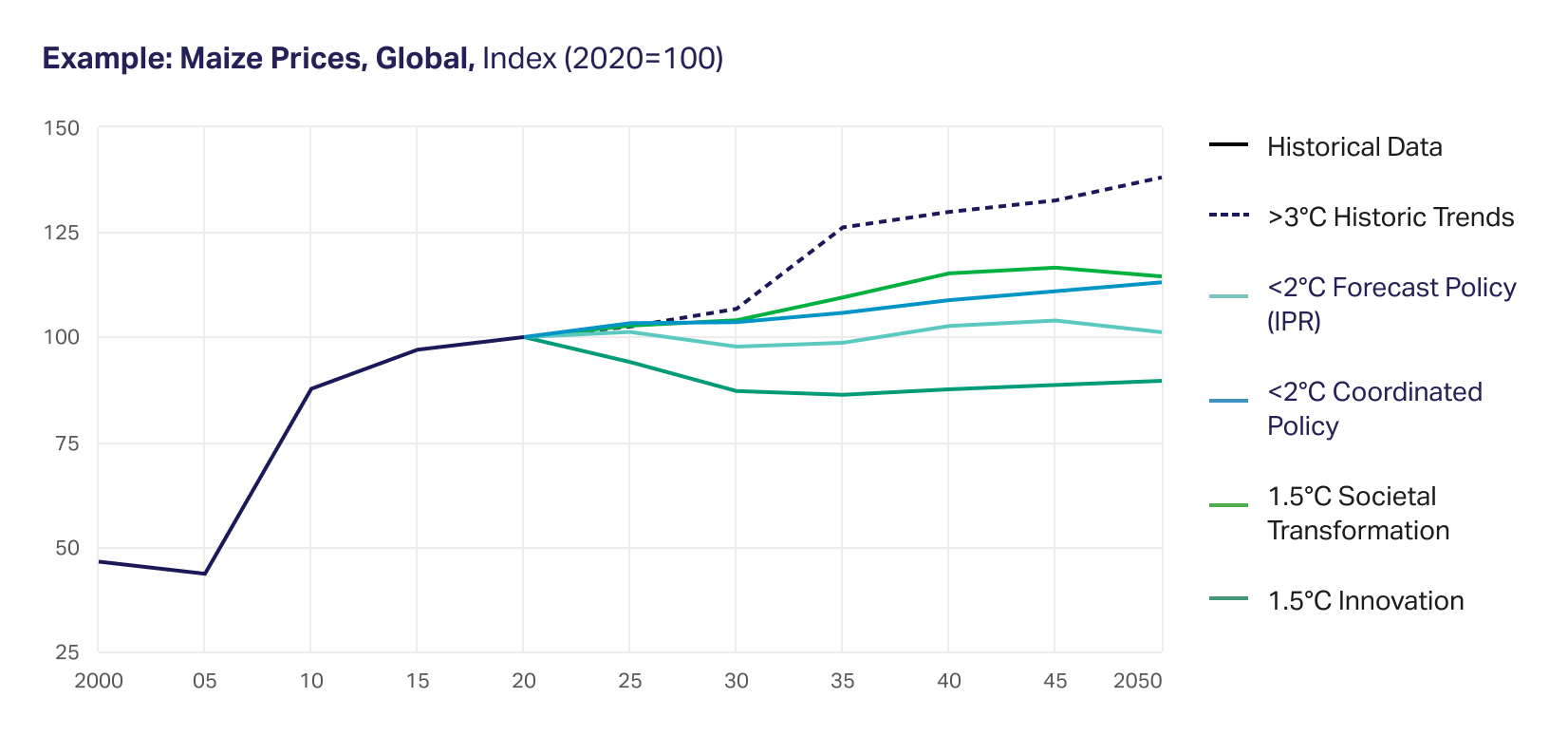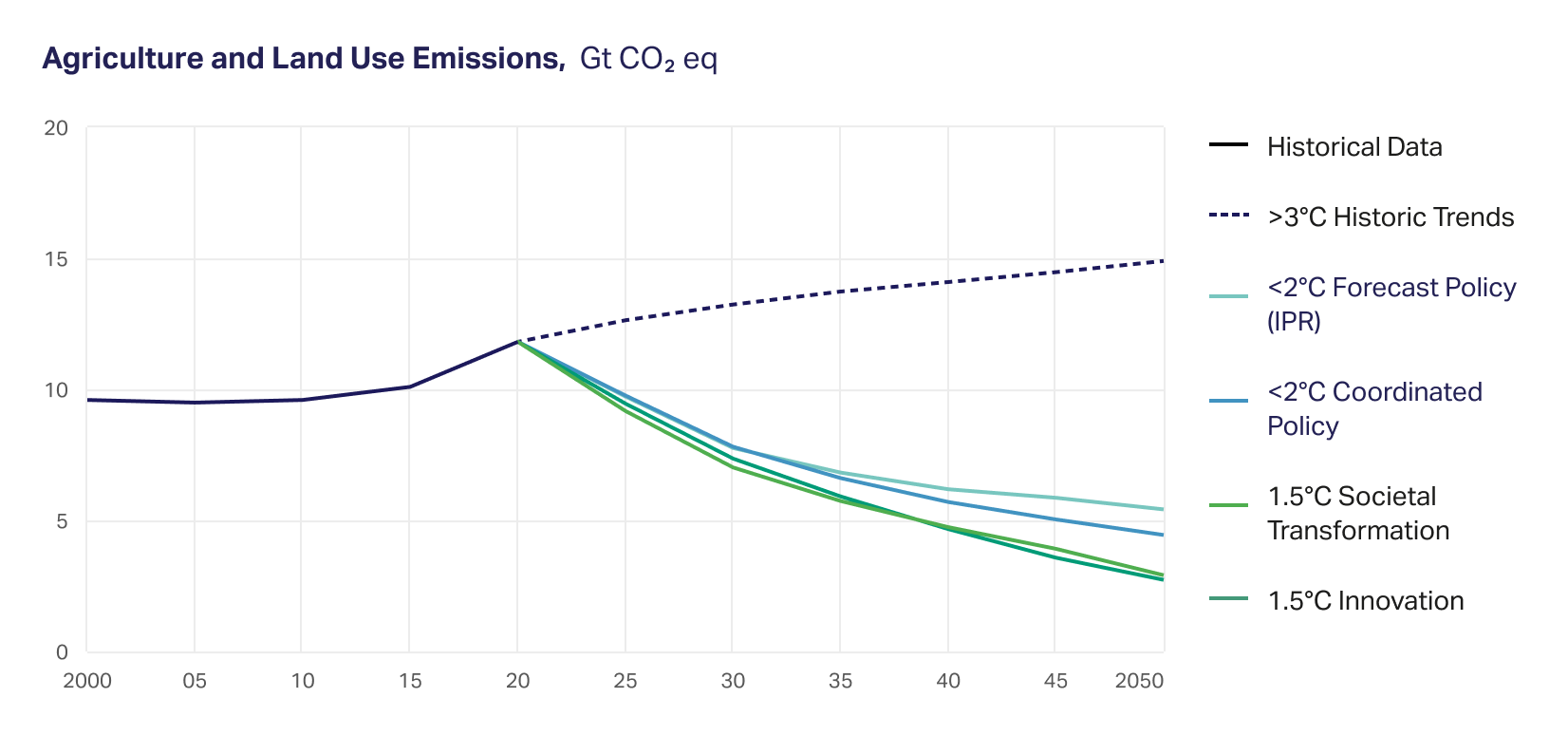Food, agriculture, and forests
A wave of changes
Changes in the past have led to significant disruptions in the food, agriculture, and forests sector that forced companies to adapt or decline. Climate change has the potential to create another wave of massive disruptions.
We’ve developed a set of scenarios that explores possible futures for the food, agriculture and forests sectors. These scenarios help companies better understand potential market and environmental implications of future changes due to climate change.
Four major drivers are likely to shape the sector
Driver 1: Growing food, feed, and fuel demand
Projected population and income growth, as visualized here through GDP, generally leads to rising demand for food, agriculture, and forest products — but new climate actions would create variation by commodity and region.
~2x
overall increase in global GDP by 2050
Driver 2: Climate policies to curb the sector’s emissions
For society to avoid catastrophic climate impacts, policymakers will have to take swift action to curb greenhouse gas emissions, including from the food, agriculture, and forestry sectors.
~77%
potential sectoral CO2e reductions by 2050 under an ambitious policy action scenario
~5 Gt
potential annual emissions reduction from reforestation, afforestation, and avoided deforestation by 2050
Driver 3: Consumers eating less emissions intensive proteins
Consumers are increasingly paying attention to the impact of what they eat; a scaled shift toward more plant-based foods — especially in Western diets — would reduce emissions, feed production, and land use pressures.
–14%
decrease in demand for beef products under a high ambition policy scenario
+51%
increase in demand for pulse proteins (beans, lentils, peas) from 2020-2050 under a high ambition policy scenario
Driver 4: Technology investment and uptake
The pace of technology advancement and adoption will influence how productive land is — and by extension, how expensive it will be to produce food, feed, and fuel
+70%
potential average increase in crop yields from 2020-2050 under 1.5ºC Innovation scenario
Four examples of potential disruptions
Deforestation
In the past, deforestation consistently increased. In contrast, land protection and carbon pricing policies could limit conversion of all natural land, reversing deforestation and halting biodiversity loss.

Proteins
In the past, meat production has steadily risen with global GDP. However, the future could take a wide range of pathways as a result of climate policies, societal shifts, and innovation.

Food Prices
Food prices significantly increased from 1990 to today. Agricultural innovation, land conservation and additional climate policies could create a range of future price trajectories.

GHG Emissions
Emissions from agriculture, land use, deforestation and land conversion have not budged between 2000 and today. Climate policies and innovation could produce a range of trajectories for the decarbonization of the sector.

Adapting to pressure
How the food we eat is produced must change to adapt to climate and demographic pressures. Scenario analysis can help prepare a company for these potential future changes
Scenario analysis allows companies to:

Strategize
Conduct strategic planning to identify investment, physical risk mitigation opportunities and future policy options.

Identify opportunities
Identify new business opportunities in core or adjacent markets that will be affected by the transition, identify emerging innovations, and examine plausible future demand for a specific product.

Disclose
Complete public reporting and disclosure requirements.

Communicate
Communicate with stakeholders to boost investor confidence and engage consumers and employees.
These four actions can help companies improve resilience and identify areas to strengthen their strategies.
